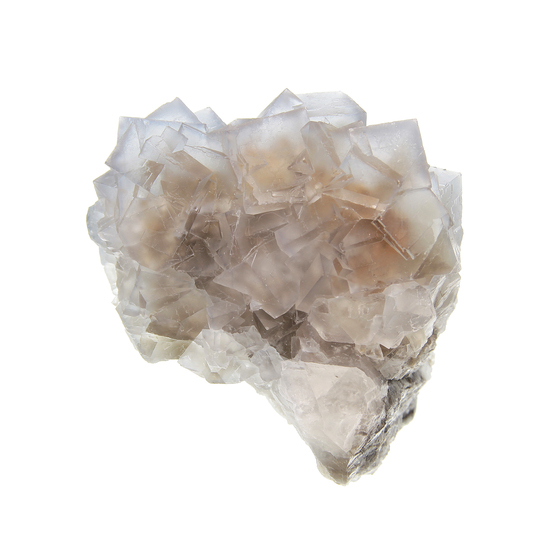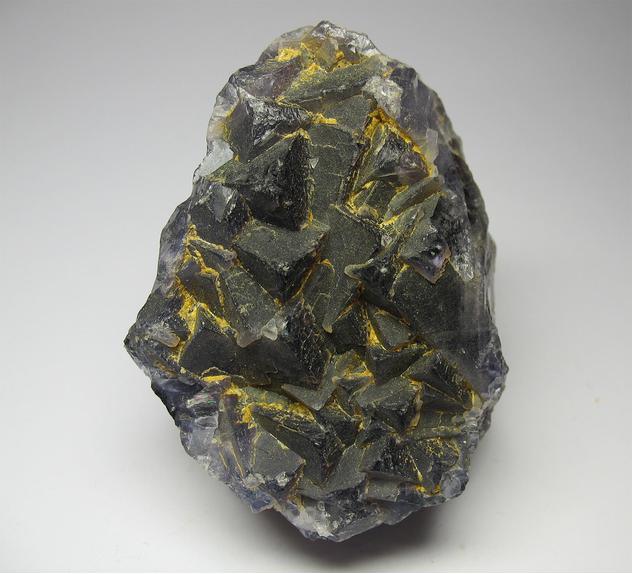Koh-i-Maran, Kalat District, Balochistan Region, Pakistani
| Regional Level Types | |
|---|---|
| Koh-i-Maran | Diggings (Active) |
| Kalat District | District |
| Balochistan Region | Region |
| Pakistan | Country |
This page is currently not sponsored. Click here to sponsor this page.
Latitude & Longitude (WGS84):
29° 26' 21'' North , 66° 48' 29'' East
Latitude & Longitude (decimal):
Type:
Diggings (Active) - last checked 2018
Köppen climate type:
Mindat Locality ID:
232400
Long-form identifier:
mindat:1:2:232400:8
GUID (UUID V4):
64f9c2ad-572e-4388-b455-bacea8826a9f
A mountain range near Kalat, 100 km SSW from Quetta, capital of Balochistan Province.
Large fluorite deposit in the east of the range. Jurassic limestones.
The fluorite deposits of Koh-e-Maran constitute a small, though potentially significant, mineral resource in the central part of Pakistan. The mineralization is exposed naturally and in numerous small workings, predominantly as a series of stratiform 'manto-type' replacement bodies, pipes/pods and discordant veins at the top of an approximately 1000 m thick sequence of well-bedded limestones of Middle Jurassic age (the Chiltan Limestone). Fluorite and calcite dominate the mineralization throughout the area, while baryte only occurs as a minor constituent generally and base-metal sulphides are notably absent.
Individuual replacement deposits rarely exceed a metre or so in thickness and there is a distinct lack of continuity between them. Furthermore, the evidence suggests that pipes and discontinuous veins acted as feeder channels for this stratiform mineralization which is formed along bedding planes at favourable horizons.
(A. H. Rankin et al. Unusual, oil-bearing inclusions in fluorite from Baluchistan, Pakistan. Mineralogical Magazine, June 1990, Vol. 54, p. 336)
***********************************************************************
United States Department of the Interior Geological Survey Project Report (1975) ~ Sulfur, Fluorspar, Magnesite and Aluminous Chromite in Pakistan by Raymond H. Nagell (U. S. Geological Survey):
“Of the four fluorspar-bearing areas described in West Pakistan, only the Koh-i-Maran deposits have been mined and have potential for future production of acid-grade fluorspar. The other three deposits are too small, or the fluorspar is too sparsely disseminated to be considered as mineable. The Koh-i-Maran fluorspar deposits, Kalat District, Kalat Division (lat 29°35'N., long 66°30'E.) are 40 miles by road south from Kolpur rail station. More than 25 fluorspar-calcite veins in Jurassic limestone crop out within an area of 4 square miles. The deposits lie on the east slope of Koh-i-Maran mountain, the crest of which approximates the axial trace of a major north-striking anticlinal fold. The veins range from a few inches to more than 6 feet in width and formed as hydrothermal open-space fillings and replacements in the limestone. A few fragments of limestone wallrock are included in the vein. Most of the fluorspar is milky white; some crystals contain tiny inclusions of amber-colored oily liquid. Three channel samples, analyzed by heavy-liquid separation of the fluorspar, show 24 to 81 percent fluorspar. No sulfide minerals are present.
The richest and most continuous veins are along fractures several hundred feet long that are visible on aerial photographs. Fluorspar-calcite veins, more than 3 feet wide, form lens-shaped masses in fractures. The lenses are as much as 200 feet long. Visible fractures as seen on aerial photographs may be prospected for additional fluorspar deposits. The veins yield an acid-grade fluorspar (97 percent calcium fluoride minimum, and 0.1 percent sulfur maximum). Less than 100 tons have been hand-cobbed from open pits for use in the Pakistan Western Railway foundry at Lahore. Considerable loss of fines is evident in the hand-cobbing operation.
Abu Bakr (1957) carefully recorded the dimensions of 23 of the veins and estimated fluorspar reserves at 72 long tons. Based on a brief examination by the author in 1963, additional pitting and mining since 1957, and assuming the depth of ore to be equal to one-half of the exposed vein length, it is inferred that 1,500 long tons of fluorspar are present in 10 of the veins. Recent surface mining has exposed several veins that are more than 6 feet in width. Additional mapping and measurement of the veins at Koh-i-Maran are recommended for more complete evaluation of the ore potential in this district. If more extensive utilization of fluorspar in the metallurgical, ceramic, and chemical industries of Pakistan is foreseen, then underground mining methods and a small beneficiation plant are recommended for efficient utilization of these deposits.”
Select Mineral List Type
Standard Detailed Gallery Strunz Chemical ElementsList of minerals arranged by Strunz 10th Edition classification
| Group 3 - Halides | |||
|---|---|---|---|
| ⓘ | Fluorite | 3.AB.25 | CaF2 |
| Group 5 - Nitrates and Carbonates | |||
| ⓘ | Calcite | 5.AB.05 | CaCO3 |
| Group 7 - Sulphates, Chromates, Molybdates and Tungstates | |||
| ⓘ | Baryte | 7.AD.35 | BaSO4 |
List of minerals for each chemical element
| C | Carbon | |
|---|---|---|
| C | ⓘ Calcite | CaCO3 |
| O | Oxygen | |
| O | ⓘ Baryte | BaSO4 |
| O | ⓘ Calcite | CaCO3 |
| F | Fluorine | |
| F | ⓘ Fluorite | CaF2 |
| S | Sulfur | |
| S | ⓘ Baryte | BaSO4 |
| Ca | Calcium | |
| Ca | ⓘ Calcite | CaCO3 |
| Ca | ⓘ Fluorite | CaF2 |
| Ba | Barium | |
| Ba | ⓘ Baryte | BaSO4 |
Other Regions, Features and Areas containing this locality
This page contains all mineral locality references listed on mindat.org. This does not claim to be a complete list. If you know of more minerals from this site, please register so you can add to our database. This locality information is for reference purposes only. You should never attempt to
visit any sites listed in mindat.org without first ensuring that you have the permission of the land and/or mineral rights holders
for access and that you are aware of all safety precautions necessary.










Koh-i-Maran, Kalat District, Balochistan Region, Pakistan